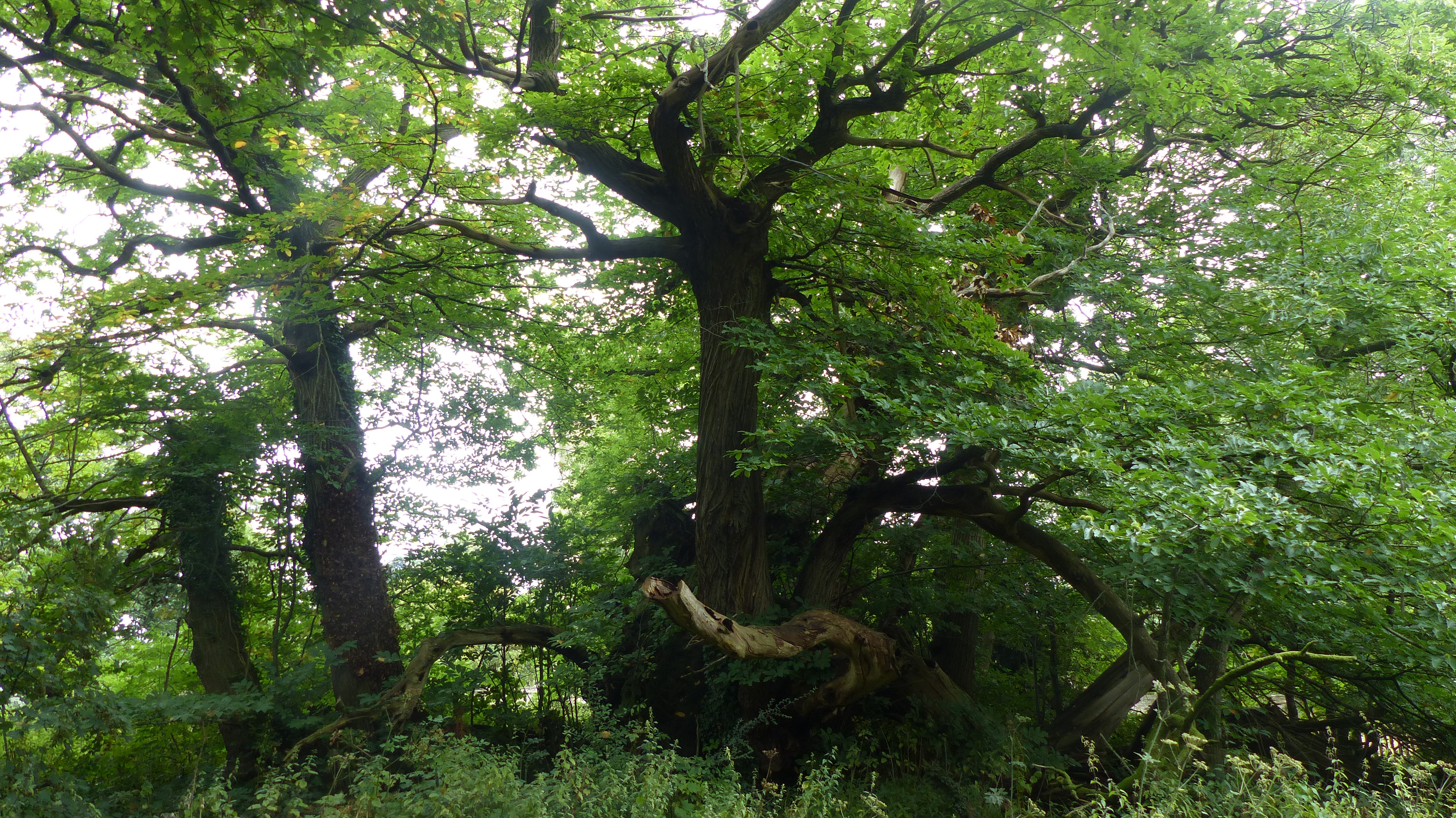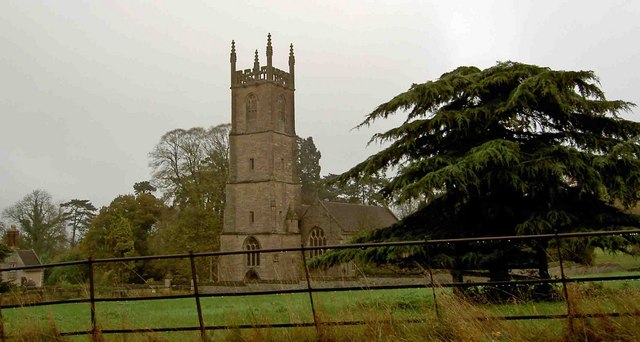|
Tortworth Chestnut
The Tortworth Chestnut is an ancient sweet chestnut (''Castanea sativa'') tree in Tortworth, South Gloucestershire. The exact age of the tree is unknown, but various sources provide estimates. Two accounts in 1664 and 1712 record the tree growing in, respectively, the 12th and 13th century, dating it at over 800 years old. The tree was known as "the Old Chestnut of Tortworth" in 1150, suggesting it is over 1,000 years old. More romantically, a legend recounts that the tree sprang from a nut planted in 800 AD during the reign of King Egbert. The tree can be accessed via a lane next to the churchyard of St Leonard's in Tortworth. The original trunk has little live growth but over centuries new trunks have formed where branches have developed, subsided and re-rooted, and continued to flourish. This method of growth, and the space afforded by the estate in which to achieve it, has ensured the chestnut's longevity but hinders simple measurement of the tree's size. In 1791 the tree was ... [...More Info...] [...Related Items...] OR: [Wikipedia] [Google] [Baidu] |
Sweet Chestnut
''Castanea sativa'', the sweet chestnut, Spanish chestnut or just chestnut, is a species of tree in the family Fagaceae, native to Southern Europe and Asia Minor, and widely cultivated throughout the temperate world. A substantial, long-lived deciduous tree, it produces an edible seed, the chestnut, which has been used in cooking since ancient times. Description ''C. sativa'' attains a height of with a trunk often in diameter. Around 20 trees are recorded with diameters over including one in diameter at breast height. A famous ancient tree known as the Hundred Horse Chestnut in Sicily was historically recorded at in diameter (although it has split into multiple trunks above ground). The bark often has a net-shaped (retiform) pattern with deep furrows or fissures running spirally in both directions up the trunk. The trunk is mostly straight with branching starting at low heights. The oblong-lanceolate, boldly toothed leaves are long and broad. The flowers of both sexe ... [...More Info...] [...Related Items...] OR: [Wikipedia] [Google] [Baidu] |
Tortworth
Tortworth is a small village and civil parish, near Thornbury, South Gloucestershire, Thornbury in Gloucestershire, England. It has a population of 147 as of 2011. It lies on the B4509 road, which crosses the M5 motorway to the west of Tortworth. History In the Domesday Book of 1086 the manor is recorded as held by Turstin FitzRolf. Tortworth is noted for its Tortworth Chestnut, ancient chestnut tree in St. Leonard's churchyard, which became known as the "Great Chestnut of Tortworth" as early as 1150. This tree measured 51 feet in circumference at 6 feet from the ground in 1720. The tree is one of fifty Great British Trees, selected in 2002 by The Tree Council to commemorate the Queen's Golden Jubilee. Geography The Tortworth inlier is the most complete section of "Silurian" rocks in the Bristol and South Gloucestershire area. Old red sandstone is most dominant. Notable landmarks The civil parish contains Tortworth Court. It was formerly the home of the Earl of Ducie, Earls of ... [...More Info...] [...Related Items...] OR: [Wikipedia] [Google] [Baidu] |
Ecgberht, King Of Wessex
Ecgberht (770/775 – 839), also spelled Egbert, Ecgbert, Ecgbriht, Ecgbeorht, and Ecbert, was King of Wessex from 802 until his death in 839. His father was King Ealhmund of Kent. In the 780s, Ecgberht was forced into exile to Charlemagne's court in the Frankish Empire by the kings Offa of Mercia and Beorhtric of Wessex, but on Beorhtric's death in 802, Ecgberht returned and took the throne. Little is known of the first 20 years of Ecgberht's reign, but it is thought that he was able to maintain the independence of Wessex against the kingdom of Mercia, which at that time dominated the other southern English kingdoms. In 825, Ecgberht defeated Beornwulf of Mercia, ended Mercia's supremacy at the Battle of Ellandun, and proceeded to take control of the Mercian dependencies in southeastern England. In 829, he defeated Wiglaf of Mercia and drove him out of his kingdom, temporarily ruling Mercia directly. Later that year Ecgberht received the submission of the Northumbrian ... [...More Info...] [...Related Items...] OR: [Wikipedia] [Google] [Baidu] |
Tortworth Sweet Chestnut
Tortworth is a small village and civil parish, near Thornbury in Gloucestershire, England. It has a population of 147 as of 2011. It lies on the B4509 road, which crosses the M5 motorway to the west of Tortworth. History In the Domesday Book of 1086 the manor is recorded as held by Turstin FitzRolf. Tortworth is noted for its ancient chestnut tree in St. Leonard's churchyard, which became known as the "Great Chestnut of Tortworth" as early as 1150. This tree measured 51 feet in circumference at 6 feet from the ground in 1720. The tree is one of fifty Great British Trees, selected in 2002 by The Tree Council to commemorate the Queen's Golden Jubilee. Geography The Tortworth inlier is the most complete section of "Silurian" rocks in the Bristol and South Gloucestershire area. Old red sandstone is most dominant. Notable landmarks The civil parish contains Tortworth Court. It was formerly the home of the Earls of Ducie, but is now run as a hotel. Tortworth Rectory, was part of ... [...More Info...] [...Related Items...] OR: [Wikipedia] [Google] [Baidu] |
Great British Trees
The Great British Trees were 50 trees selected by The Tree Council in 2002 to spotlight trees in the United Kingdom in honour of the Queen's Golden Jubilee. England Western England * Tortworth Chestnut in Tortworth, Gloucestershire * Westonbirt Lime Tree in Westonbirt Arboretum, Gloucestershire * Sweet Chestnut in Croft Castle, Herefordshire * Royal Oak in Boscobel, Shropshire * The Bewdley Sweet Chestnut in Bewdley, Worcestershire South West * Domesday Oak in Ashton Court, Bristol * Darley Oak, Upton Cross, Linkinhorne, Cornwall * Bicton College Monkey Puzzle in Bicton Park, East Budleigh, Devon * Heavitree Yew in Heavitree, near Exeter, Devon * Ashbrittle Yew in Ashbrittle, Wellington, Somerset Southern England * Brighton Pavilion Elm in Brighton, East Sussex * Queen Elizabeth Oak in Cowdray Park, Midhurst, West Sussex * Selborne Yew in Selborne, Hampshire * Wellington's Wellingtonia, a Giant Sequoia, in Stratfield Saye, Hampshire * Tolpuddle Martyrs Tr ... [...More Info...] [...Related Items...] OR: [Wikipedia] [Google] [Baidu] |
The Tree Council
The Tree Council was founded in 1974 in the United Kingdom, and became a Charitable organization#Charity registration, registered charity in 1978. Its primary objective is to act as an umbrella organisation for local groups involved in the planting, care and conservation of trees throughout the United Kingdom, and followed the successful government-sponsored Plant A Tree In '73 campaign. The charity is based at Canada Water, Surrey Quays, London. Its initiatives include: * In 2002, selecting Great British Trees, 50 Great British Trees to honour the Queen's Golden Jubilee of Elizabeth II, Golden Jubilee of accession to the throne * Supporting the UK government's The Big Tree Plant, Big Tree Plant campaign, which planted one million trees between 2011 and 2015 * Supporting the 2017 Charter for Trees, Woods and People * Supporting the Queen's Green Canopy to mark her Platinum Jubilee of Elizabeth II, Platinum Jubilee in 2022 * Organising National Tree Week in November each year __NO ... [...More Info...] [...Related Items...] OR: [Wikipedia] [Google] [Baidu] |
Golden Jubilee Of Elizabeth II
The Golden Jubilee of Elizabeth II was the international celebration held in 2002 marking the 50th anniversary of the accession of Queen Elizabeth II on 6 February 1952. It was intended by the Queen to be both a commemoration of her 50 years as monarch and an opportunity for her to officially and personally thank her people for their loyalty. Despite the deaths of her sister, Princess Margaret, and mother, Queen Elizabeth The Queen Mother, in February and March 2002 respectively, and predictions in the media that the anniversary would be a non-event, the jubilee was marked with large-scale and popular events throughout London in June of the same year, bookended by events throughout the Commonwealth realms. Elizabeth attended all of the official celebrations as scheduled, along with her husband, Prince Philip, Duke of Edinburgh; over twelve months, the royal couple journeyed more than to the Caribbean, Australia, New Zealand, then around the United Kingdom, and wrapped up the ... [...More Info...] [...Related Items...] OR: [Wikipedia] [Google] [Baidu] |
Individual Trees In England
An individual is that which exists as a distinct entity. Individuality (or self-hood) is the state or quality of being an individual; particularly (in the case of humans) of being a person unique from other people and possessing one's own needs or goals, rights and responsibilities. The concept of an individual features in diverse fields, including biology, law, and philosophy. Etymology From the 15th century and earlier (and also today within the fields of statistics and metaphysics) ''individual'' meant " indivisible", typically describing any numerically singular thing, but sometimes meaning "a person". From the 17th century on, ''individual'' has indicated separateness, as in individualism. Law Although individuality and individualism are commonly considered to mature with age/time and experience/wealth, a sane adult human being is usually considered by the state as an "individual person" in law, even if the person denies individual culpability ("I followed instruct ... [...More Info...] [...Related Items...] OR: [Wikipedia] [Google] [Baidu] |





